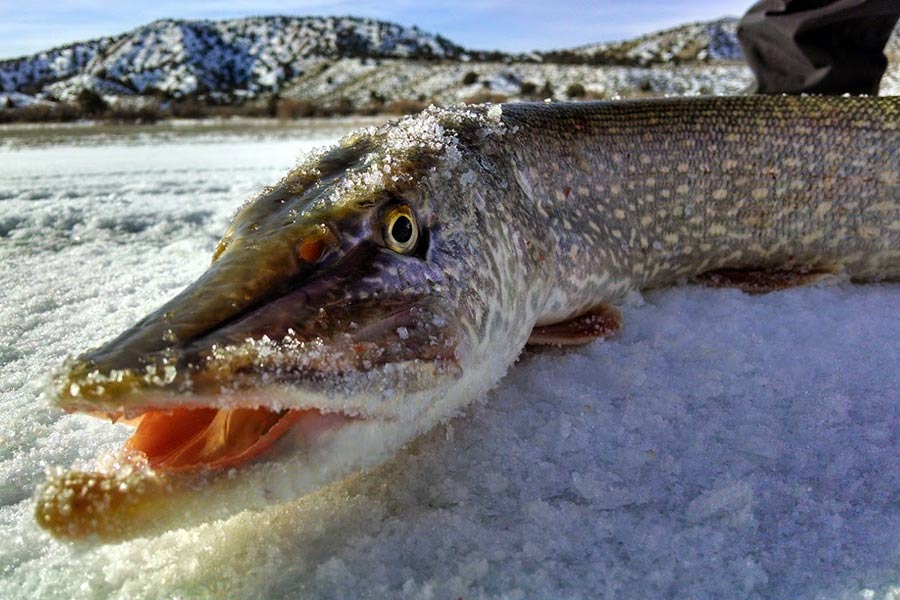Anglers need to report, release tagged northern pike caught in Utah Lake — and kill the rest
Provo — As part of an ongoing study launched two years ago, the Utah Division of Wildlife Resources is still asking anglers to report and release any tagged northern pike they catch in Utah Lake. And, because the invasive fish were placed in Utah Lake illegally, anglers must kill any northern pike they catch that don't have a tag.
DWR biologists started tagging some of the northern pike in Utah Lake and its tributaries in February 2020 as part of a study to learn more about the seasonal locations and movements of juvenile and adult pike in Utah Lake, the Provo River, Hobble Creek and the Spanish Fork River. The study is expected to run for at least five years (until 2025).
Since northern pike typically spawn when the ice begins to melt, anglers may catch more of the invasive fish at Utah Lake this time of year.
The tagged northern pike have thin, red pieces of plastic attached to them. Tagged fish have been implanted with transmitters so biologists can track them using GPS technology. Surgical scars should be visible on their underside in the unlikely event that the external tag is dislodged.
"We are asking anglers to release pike that have these tags because the transmitters that are in the fish enable us to track their movements," DWR Central Region Native Aquatics Biologist Keith Lawrence said. "Tracking their movements will help us develop a monitoring and control program for northern pike in the future, which will help threatened June suckers."
If you catch a tagged northern pike in Utah Lake or one of its tributaries, you should do the following:
- Call DWR native fish biologist Dale Fonken at 503-730-9424
- Report the date and exact location where you caught the fish
- Report the tag number
- Release the fish unharmed
As in the past, if you catch a pike that doesn't have a tag, you must remove the fish from the water and kill it.
"In that case, we always like to hear precisely where and when these fish were caught. The size of the fish is always good information as well," Lawrence said. "If a tagged pike inadvertently dies, we would still like to recover the fish in case the transmitter can be reused, so we ask folks to let us know if that happens. We'd love to have the fish or tag brought to our office in Springville, but we will gladly make arrangements to pick it up from the angler."
Northern pike were first detected by the DWR in Utah Lake in 2011. Because pike are predatory and reproduce rapidly, biologists are worried about the effect they will have on some of the other fish species in the lake. June suckers are of particular concern due to their precarious status, but pike have the potential to impact sportfish in the lake such as walleye, white bass and yellow perch.
June suckers, which are found only in Utah Lake, were downlisted from endangered to threatened in December 2020, a huge accomplishment and major milestone in their recovery. Their continued recovery and eventual delisting from the Endangered Species Act could be jeopardized if the number of pike in the lake expands to unrestricted levels.

















